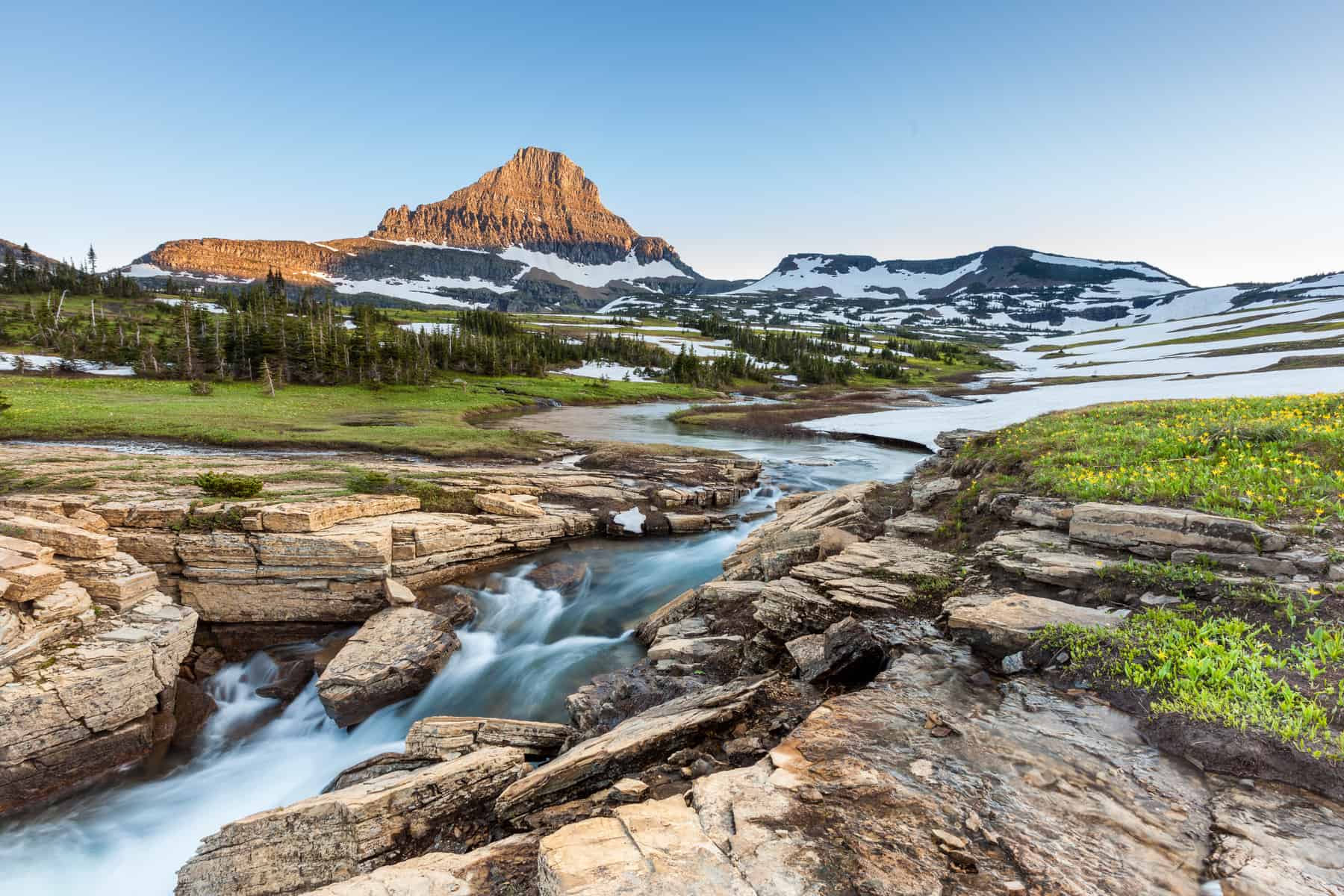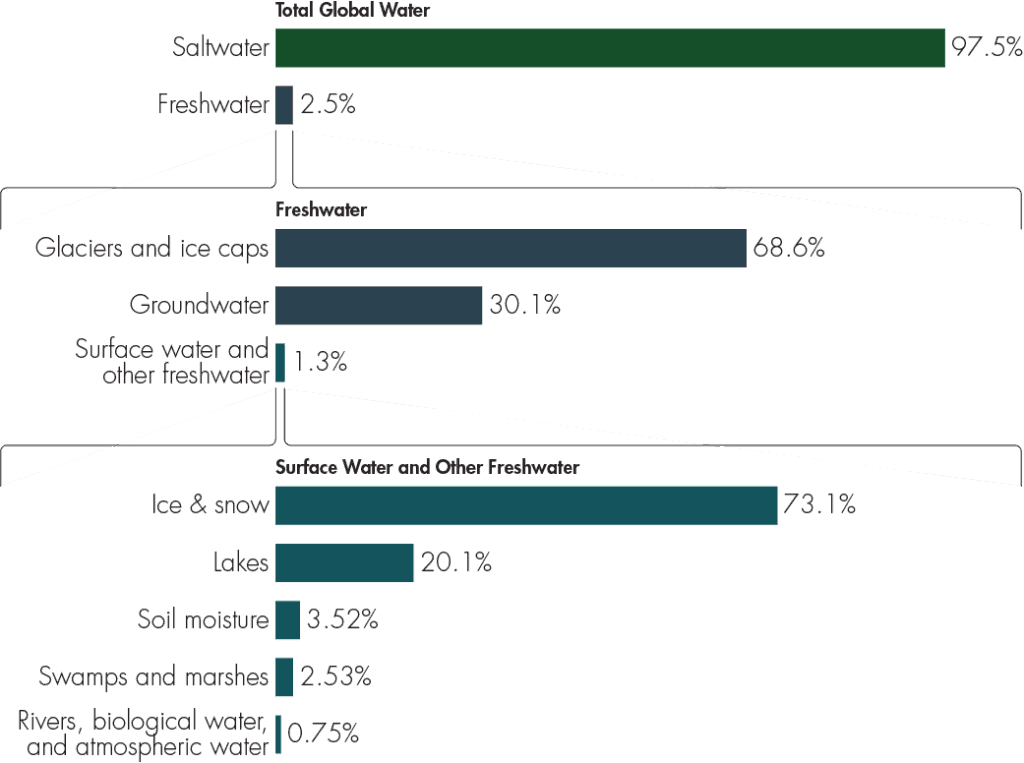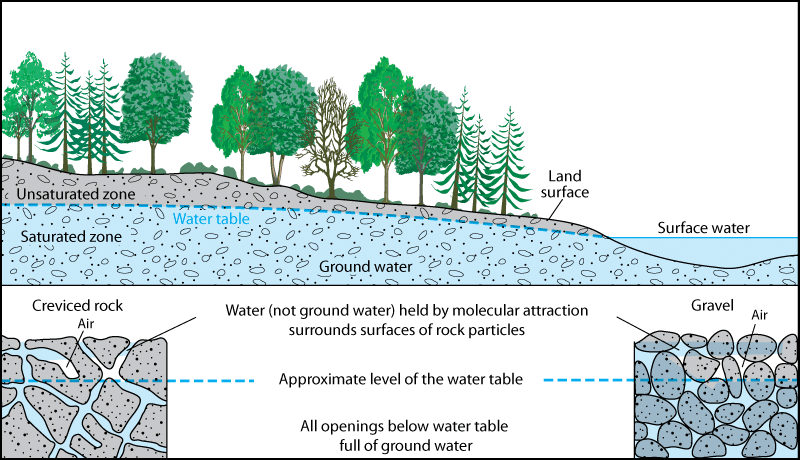
The location and source of liquid water affects the usability of water as much as its salt content. Surface water sits on top of the ground in rivers and lakes or in the oceans, ultimately covering 70% of Earth’s surface. Groundwater lies underground as opposed to on the ground and can be fresh or saline. An aquifer is an underground geological zone with a large volume of water that is naturally stored in porous rock such as sandstone.

Igor Shiklomanov, “World fresh water resources” in Water in Crisis: A Guide to the World's Fresh Water Resources
Of the world’s freshwater, glaciers and permanent snow hold more than two-thirds; groundwater, including soil moisture, swamp water, permafrost, and aquifers, contains an additional 30%; and lakes and rivers contain only a small fraction of freshwater.1Igor Shiklomanov, “World fresh water resources” in Water in Crisis: A Guide to the World's Fresh Water Resources, ed. Peter H. Gleick (Oxford: Oxford University Press, 1993). The ground holds more than 100 times more water than all the world’s rivers and lakes. In all, very little of the world’s water is easily accessible surface freshwater.
In terms of groundwater, the unsaturated zone refers to water in the soil above the water table. This zone contains relatively less water by volume. Wells should extend deep into the saturated zone, where water is more abundant. As groundwater sources are depleted, the water table and the saturated zone drops, meaning wells must go deeper and require more energy to pump water to the surface.
Surface water and groundwater are interconnected. Surface water trickles down into the ground, recharging aquifers. Groundwater reaches the surface naturally or under its own force at springs if the outlet is natural, and through flowing artesian wells if the outlet is manmade.

Image Credits: kan_khampanya/Shutterstock.com.
Update your browser to view this website correctly.Update my browser now